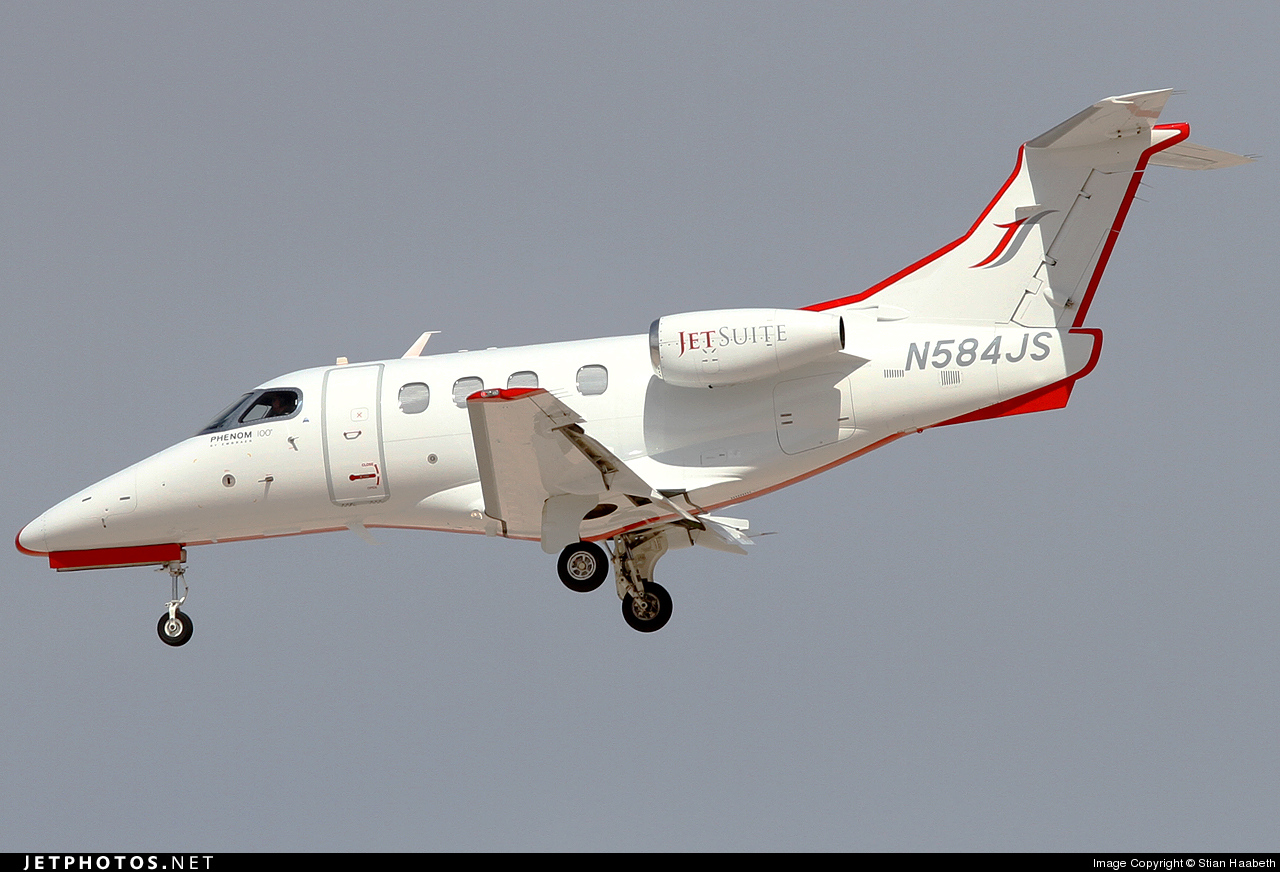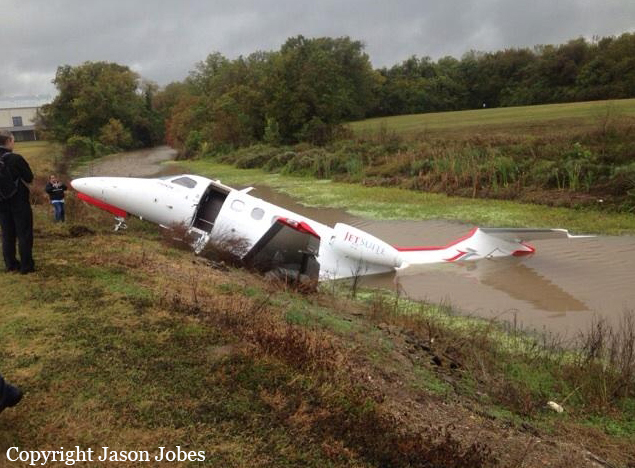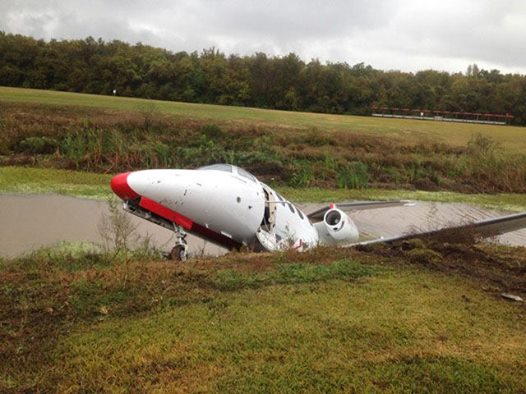Country
Crash of an Embraer EMB-500 Phenom 100 in Gaithersburg: 6 killed
Date & Time:
Dec 8, 2014 at 1041 LT
Registration:
N100EQ
Survivors:
No
Schedule:
Chapel Hill - Gaithersburg
MSN:
500-00082
YOM:
2009
Crew on board:
1
Crew fatalities:
Pax on board:
2
Pax fatalities:
Other fatalities:
Total fatalities:
6
Captain / Total hours on type:
136.00
Aircraft flight hours:
634
Aircraft flight cycles:
552
Circumstances:
The airplane crashed while on approach to runway 14 at Montgomery County Airpark (GAI), Gaithersburg, Maryland. The airplane impacted three houses and the ground about 3/4 mile from the approach end of the runway. A postcrash fire involving the airplane and one of the three houses, which contained three occupants, ensued. The pilot, the two passengers, and the three people in the house died as a result of the accident. The airplane was destroyed by impact forces and postcrash fire. The flight was operating on an instrument flight rules flight plan under the provisions of 14 Code of Federal Regulations (CFR) Part 91. Visual meteorological conditions prevailed at the time of the accident. Data from the airplane’s cockpit voice and data recorder (CVDR) indicated that the takeoff about 0945 from Horace Williams Airport, Chapel Hill, North Carolina, and the cruise portion of the flight were uneventful. CVDR data showed that about 15 minutes after takeoff, the passenger in the right cockpit seat made a statement that the airplane was “in the clouds.” A few seconds later, the airplane’s engine anti-ice system and the wing and horizontal stabilizer deice system were manually activated for about 2 minutes before they were manually turned off. About 6 minutes later, a recording from the automated weather observing system (AWOS) at GAI began transmitting over the pilot’s audio channel, containing sufficient information to indicate that conditions were conducive to icing during the approach to GAI. The CVDR recorded no activity or faults during the rest of the flight for either ice protection system, indicating that the pilot did not turn the systems back on. Before the airplane descended through 10,000 ft, in keeping with procedures in the EMB-500 Pilot Operating Handbook, the pilot was expected to perform the Descent checklist items in the Quick Reference Handbook (QRH), which the pilot should have had available in the airplane during the flight. Based on the AWOS-reported weather conditions, the pilot should have performed the Descent checklist items that appeared in the Normal Icing Conditions checklist, which included turning on the engine anti-ice and wing and horizontal stabilizer deice systems. That action, in turn, would require the pilot to use landing distance performance data that take into account the deice system’s activation. CVDR data show that, before beginning the descent, the pilot set the landing reference (Vref) speed at 92 knots, indicating that he used performance data for operation with the wing and horizontal stabilizer deice system turned off and an airplane landing weight less than the airplane’s actual weight. Using the appropriate Normal Icing Conditions checklist and accurate airplane weight, the pilot should have flown the approach at 126 knots (a Vref of 121 knots +5 knots) to account for the icing conditions.
Probable cause:
The National Transportation Safety Board determines that the probable cause of this accident was the pilot’s conduct of an approach in structural icing conditions without turning on the airplane’s wing and horizontal stabilizer deice system, leading to ice accumulation on those surfaces, and without using the appropriate landing performance speeds for the weather conditions and airplane weight, as indicated in the airplane’s standard operating procedures, which together resulted in an aerodynamic stall at an altitude at which a recovery was not possible.
Final Report:






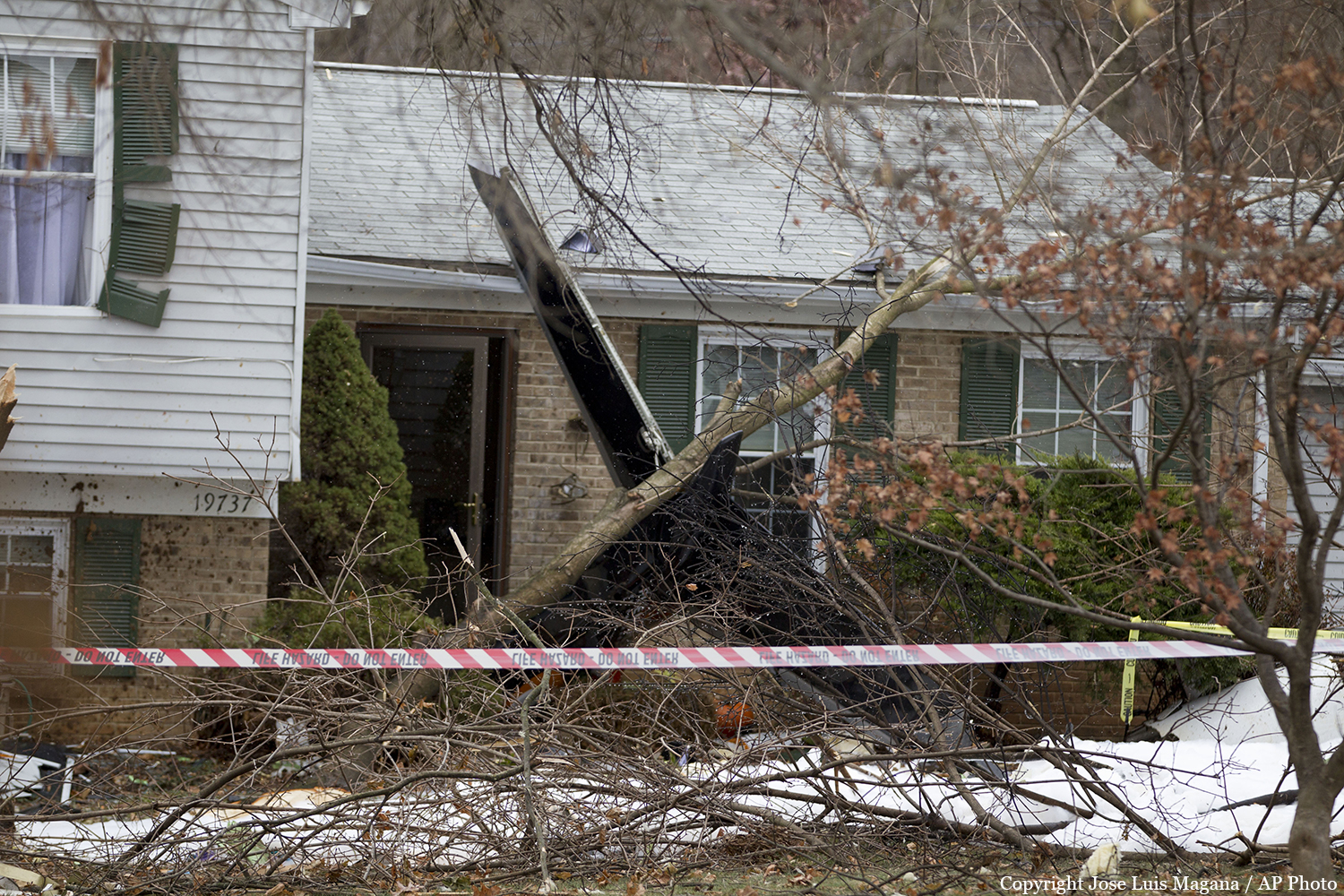
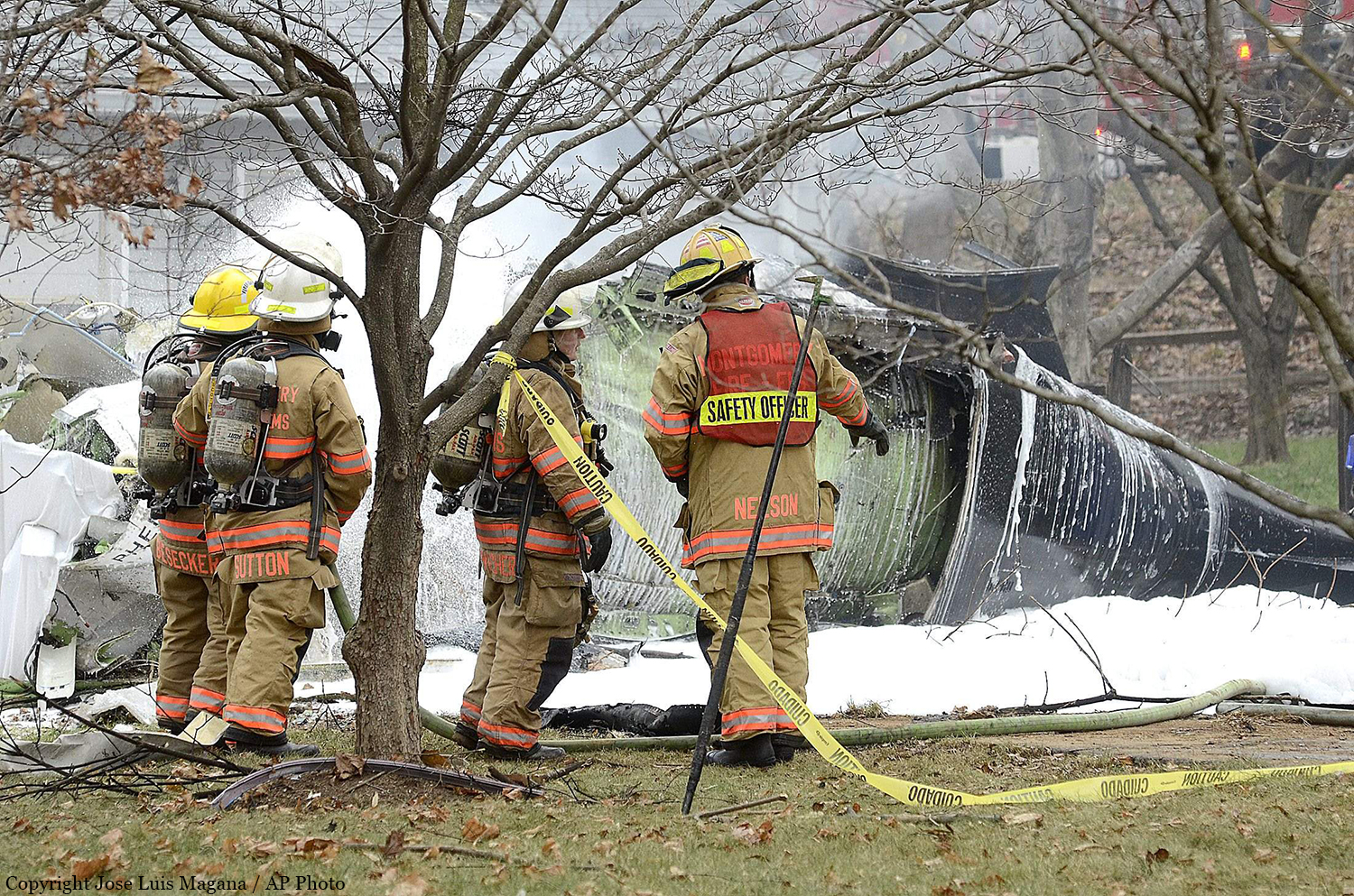
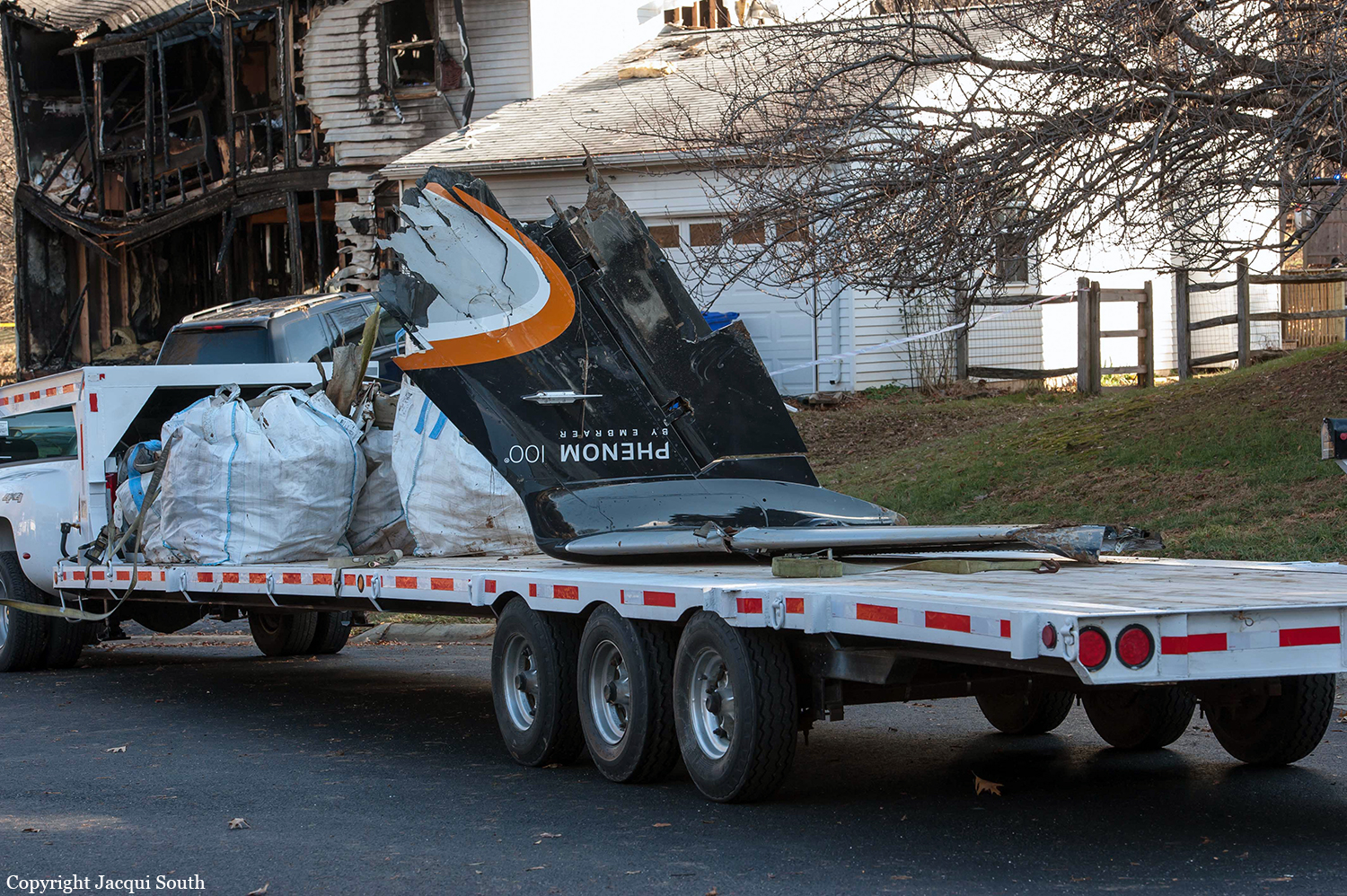
Crash of an Embraer EMB-500 Phenom 100 in Houston
Date & Time:
Nov 21, 2014 at 1010 LT
Registration:
N584JS
Survivors:
Yes
Schedule:
Houston - Houston
MSN:
500-00140
YOM:
2010
Flight number:
RSP526
Crew on board:
2
Crew fatalities:
Pax on board:
0
Pax fatalities:
Other fatalities:
Total fatalities:
0
Captain / Total hours on type:
410.00
Copilot / Total hours on type:
814
Aircraft flight hours:
3854
Circumstances:
The pilots of the very light jet were conducting a positioning flight in instrument meteorological conditions. The flight was cleared by air traffic control for the instrument landing system (ILS) approach; upon being cleared for landing, the tower controller reported to the crew that there was no standing water on the runway. Review of the airplane's flight data recorder (FDR) data revealed that the airplane reached 50 ft above touchdown zone elevation (TDZE) at an indicated airspeed of 118 knots (KIAS). The airplane crossed the runway displaced threshold about 112 KIAS, and it touched down on the runway at 104 KIAS with about a 7-knot tailwind. FDR data revealed that, about 1.6 seconds after touchdown of the main landing gear, the nose landing gear touched down and the pilot's brake pedal input increased, with intermediate oscillations, over a period of 7.5 seconds before reaching full pedal deflection. During this time, the airplane achieved its maximum wheel braking friction coefficient and deceleration. The cockpit voice recorder recorded both pilots express concern the that the airplane was not slowing. About 4 seconds after the airplane reached maximum deceleration, the pilot applied the emergency parking brake (EPB). Upon application of the EPB, the wheel speed dropped to zero and the airplane began to skid, which resulted in reverted-rubber hydroplaning, further decreasing the airplane's stopping performance. The airplane continued past the end of the runway, crossed a service road, and came to rest in a drainage ditch. Postaccident examination of the brake system and data downloaded from the brake control unit indicated that it functioned as commanded during the landing. The airplane was not equipped with thrust reversers or spoilers to aid in deceleration. The operator's standard operating procedures required pilots to conduct a go-around if the airspeed at 50 ft above TDZE exceeded 111 kts. Further, the landing distances published in the airplane flight manual (AFM) are based on the airplane slowing to its reference speed (Vref) of 101 KIAS at 50 ft over the runway threshold. The airplane's speed at that time exceeded Vref, which resulted in an increased runway distance required to stop; however, landing distance calculations performed in accordance with the AFM showed that the airplane should still have been able to stop on the available runway. An airplane performance study also showed that the airplane had adequate distance available on which to stop had the pilot continued to apply maximum braking rather than engage the EPB. The application of the EPB resulted in skidding, which increased the stopping distance. Although the runway was not contaminated with standing water at the time of the accident, the performance study revealed that the maximum wheel braking friction coefficient was significantly less than the values derived from the unfactored wet runway landing distances published in the AFM, and was more consistent with the AFM-provided landing distances for runways contaminated with standing water. Federal Aviation Administration Safety Alert for Operators (SAFO) 15009 warns operators that, "the advisory data for wet runway landings may not provide a safe stopping margin under all conditions" and advised them to assume "a braking action of medium or fair when computing time-of-arrival landing performance or [increase] the factor applied to the wet runway time-of-arrival landing performance data." It is likely that, based on the landing data in the AFM, the crew expected a faster rate of deceleration upon application of maximum braking; when that rate of deceleration was not achieved, the pilot chose to engage the EPB, which only further degraded the airplane's braking performance.
Probable cause:
The pilot's engagement of the emergency parking brake during the landing roll, which decreased the airplane's braking performance and prevented it from stopping on the available runway. Contributing to the pilot's decision to engage the emergency parking brake was the expectation of a faster rate of deceleration and considerably shorter wet runway landing distance provided by the airplane flight manual than that experienced by the crew upon touchdown and an actual wet runway friction level lower than the assumed runway fiction level used in the calculation of the stopping distances published in the airplane flight manual.
Final Report:
